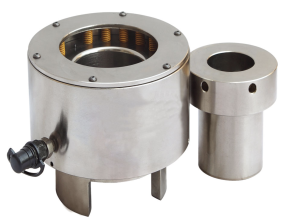Flange alignment tools have come a long way in innovation and design. These tools have evolved significantly to meet the ever-increasing demands of modern industries. Over the years, advancements in technology and materials have led to more efficient, precise, and versatile flange alignment tools.
High-Tech Flange Alignment Tools
One of the remarkable developments in flange alignment tools is the integration of high-tech features. Today, you can find tools equipped with digital displays and sensors that provide real-time data on flange alignment. These tools allow for instant adjustments and ensure unparalleled precision, making them indispensable in industries where exact measurements are critical.
Remote Monitoring and Control
Some of the latest flange alignment tools can be remotely monitored and controlled. This innovation is particularly beneficial for industries that require alignment in challenging environments, such as underwater pipelines or remote oil rigs. Operators can now use technology to adjust flange alignment from a distance, enhancing safety and efficiency.
3D Printing for Customization
The advent of 3D printing technology has also significantly impacted the manufacturing of flange alignment tools. Companies can now produce customized tools that perfectly fit the specifications of a particular project.
Eco-Friendly Flange Alignment Tools
Manufacturers have started creating sustainable flange alignment equipment in response to growing environmental concerns. These tools use eco-friendly materials and processes, contributing to a greener and more responsible industrial landscape. This shift towards eco-conscious tools aligns with the global push for environmentally responsible practices.
Augmented Reality in Flange Alignment
Augmented reality (AR), a technology that can be installed and used in any position, has found its way into flange alignment tools. AR applications provide on-screen overlays that guide operators in achieving precise flange alignment. This technology simplifies the alignment process, reduces the need for extensive training, and minimizes the margin of error.
Future Prospects: AI-Enhanced Flange Alignment Tools
Looking ahead, integrating artificial intelligence (AI) into flange alignment tools holds great promise. AI can evaluate enormous volumes of data to maximize flange alignment, foresee potential problems, and automate modifications. These AI-enhanced tools can potentially revolutionize the efficiency and reliability of industrial systems.
Advancing Industries and Flange Alignment
The desire for better efficiency, safety, and sustainability is one of the primary driving forces for the ongoing industrial landscape evolution. Flange alignment tools, appropriate for use on most ANSI, API, BS, and DIN flanges, are no exception; they are pivotal in this progress. As industries advance, the demand for highly adaptable and precise flange alignment tools grows. These tools are not just keeping pace with change but actively shaping the future of industrial systems by ensuring the integrity of critical connections.
Flange Alignment Tools in Extreme Environments
Flange alignment tools are now adapting to operate in extreme and challenging environments. These tools are designed to withstand harsh conditions, from deep-sea applications to high-temperature industrial settings. They incorporate specialized materials, coatings, and features to ensure accurate alignment, even in the most demanding situations. Functioning reliably in extreme environments is crucial for industries with unique challenges.
Customization and Efficiency
Flange alignment tools have undergone a remarkable transformation, adapting to the needs and challenges of modern industries. These tools continue to evolve from high-tech features and remote control to 3D printing and eco-friendly materials. The future appears even more exciting with the potential integration of artificial intelligence, promising enhanced accuracy and efficiency in flange alignment processes. As industries continue to advance, so will the tools that ensure the integrity of their critical systems.





